A smoky, sweet syrup made from toasted hickory bark, shagbark syrup has been a forager's secret for a long time. It's a bit like a hickory nut recipe without the hickory nuts, which also means it can be something useful to make on years when the trees aren't producing enough nuts to gather, since bark is always available.

I've been seeing the syrup creep its way into farmers markets as an interesting value-added product in recent years. Today I'll describe how it's made, and what you can do with it.
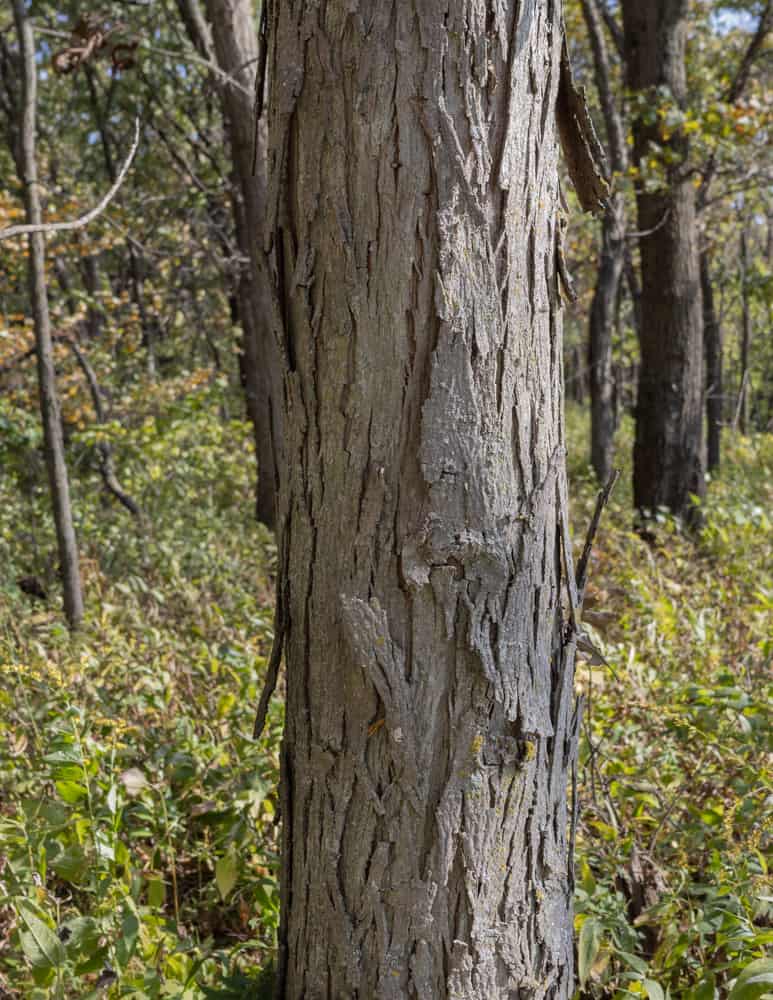
Known as a kind of maple syrup substitute, shagbark syrup, unlike other tree syrups made from sugar maples and others, is made from a tea or infusion of roasted hickory bark (Carya ovata is the only species I use) and sugar. The finished syrup tastes good, but I think it's important for me to tell you it's more of a "poor man's maple syrup" and definitely isn't worth as much as the real deal.
Harvesting tree bark as food
Bark isn't something that we often think of as food, so it's important to go over a few things. Here's a quick list.
Harvest living bark
You must harvest bark from a living tree to make this. It should look clean, and be free of moss, spiders, mold, and other things you wouldn't want to eat.
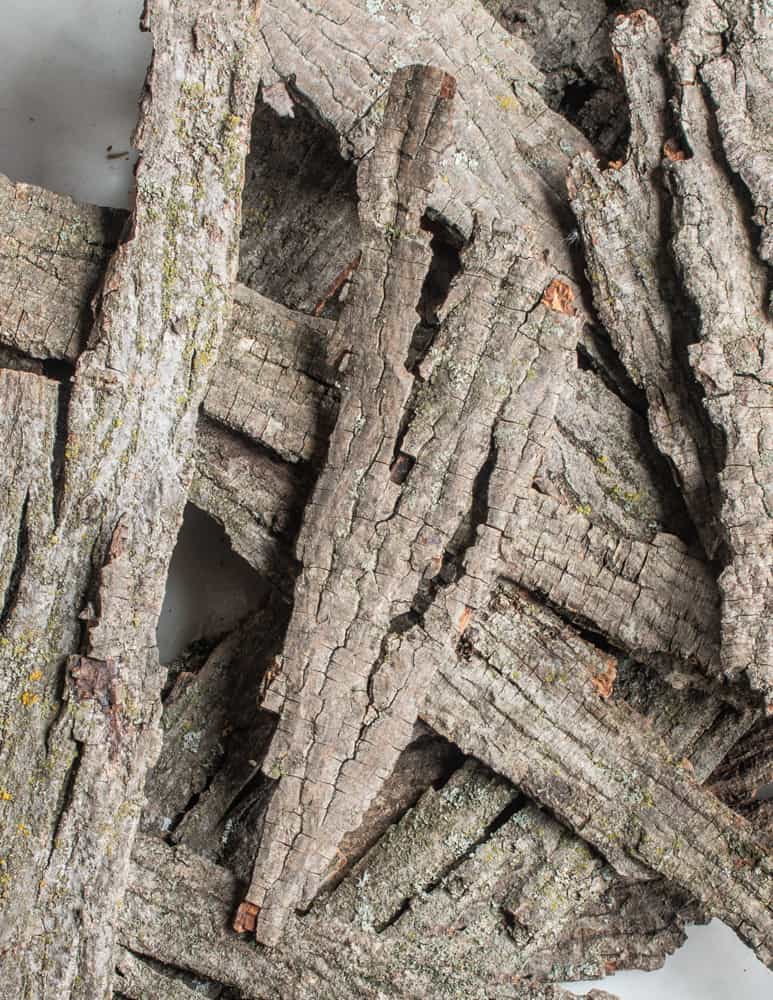
Cooking and cleaning
After you've harvested your pieces of bark they should washed and scrubbed with a brush to remove any excess particles that could get into the syrup (you'll strain it too so don't worry too much). After cleaning, the bark is roasted which gives it a nice toasty, slightly smoky flavor.
Avoiding overharvesting
I don't think this is a huge issue, but it is worth mentioning. Shagbark trees have lots of shaggy bark to spare, but I think it's good to mention that you shouldn't harvest heavily from a single tree. Make sure that you're harvest isn't noticeable to the naked eye, and that you're not harvesting heavily that could leave the tree vulnerable to pests and molds.
How to make the syrup
To make the syrup, you take your cleaned, roasted bark (half a pound of bark is plenty and will make about 4 cups) broken into pieces a few inches long, add water to cover in a large pot and simmer for an hour to make a smoky hickory bark tea.
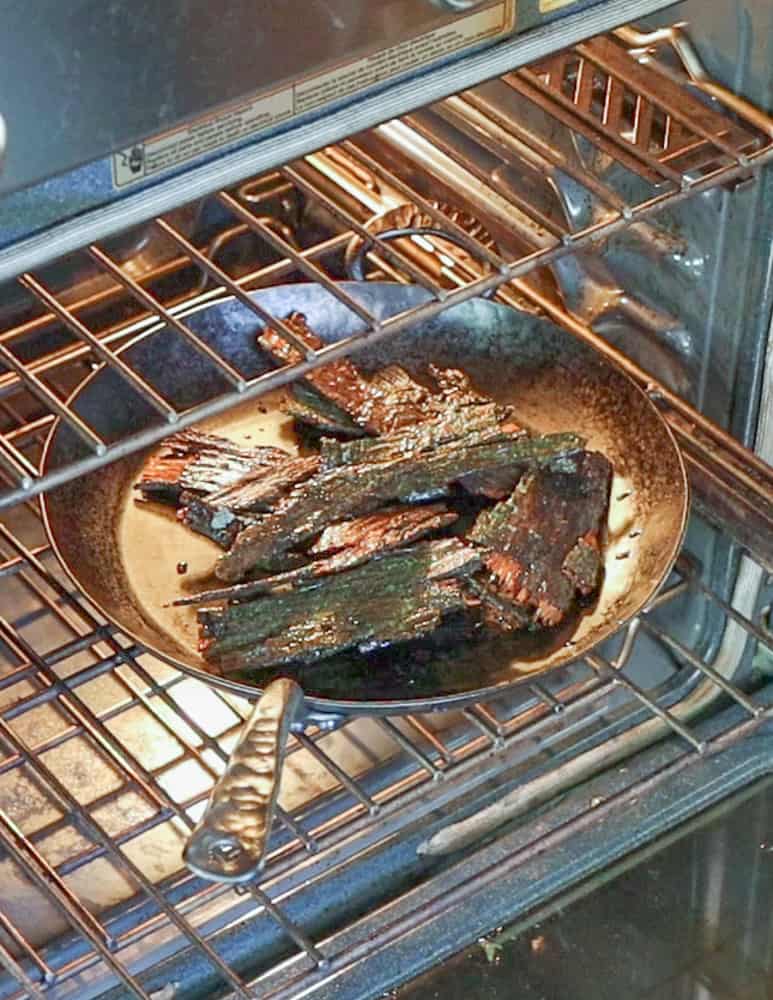

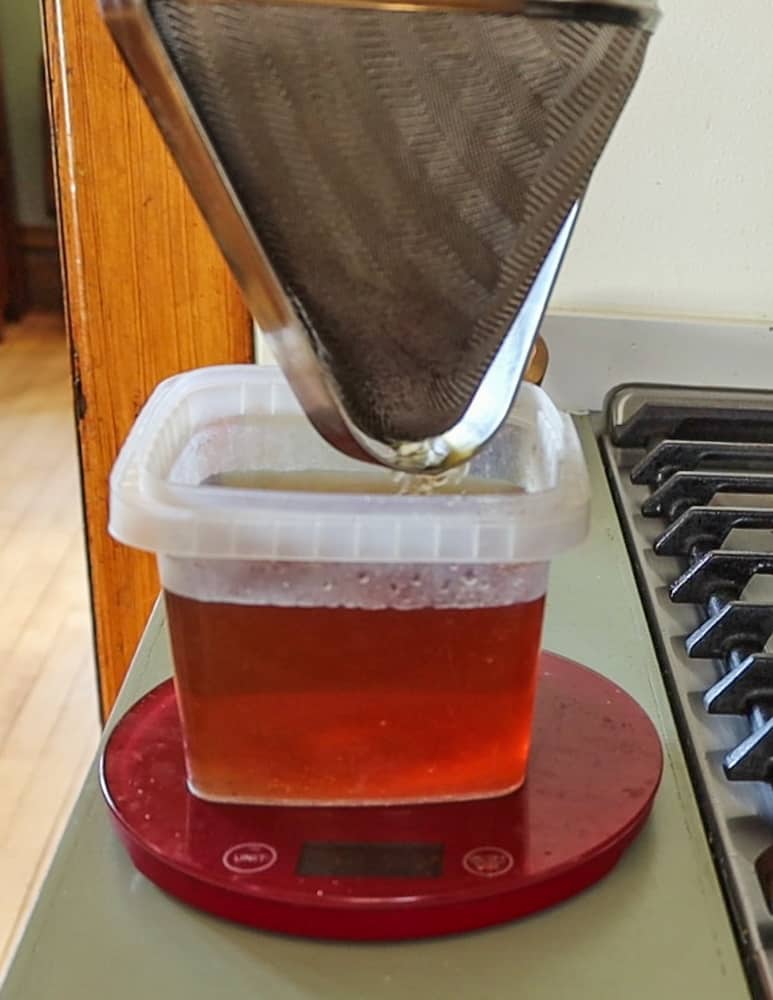

Afterward the tea is strained, mixed with an equal volume amount of sugar, and simmered until the simple syrup reaches 225 F on a candy thermometer. That's it.
After the syrup reaches the proper temperature, you can pour it into mason jars, top them with a lid and store in a pantry. The finished syrup is great and a good way to start using it is in place of maple syrup on pancakes or used to flavor custards and ice cream.
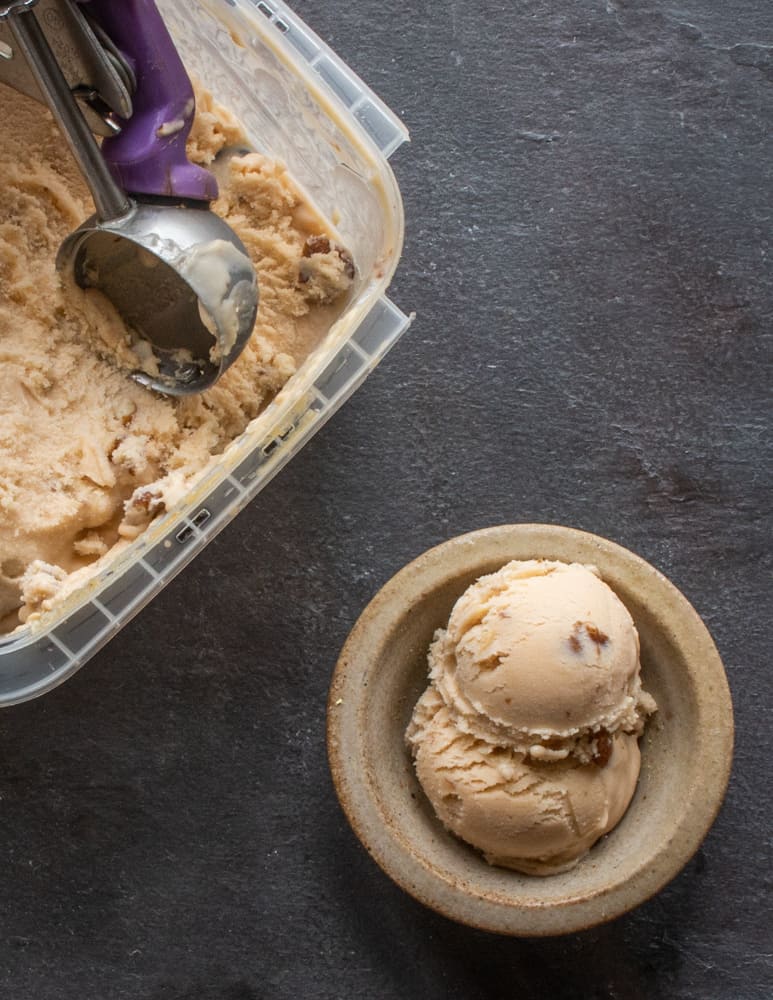
Dealing with crystallization
Crystallization can happen in the syrup if it's cooked too long and reaches a temperature over 225 F. Some people will tell you to use corn syrup to help it not crystalize (long story it's an invert sugar and helps things to not crystalize).
I can't stand corn syrup and try to avoid it whenever possible, so I only use cane sugar here. If your syrup crystalizes after it's chilled, just microwave or warm the jar up to refresh and melt it.
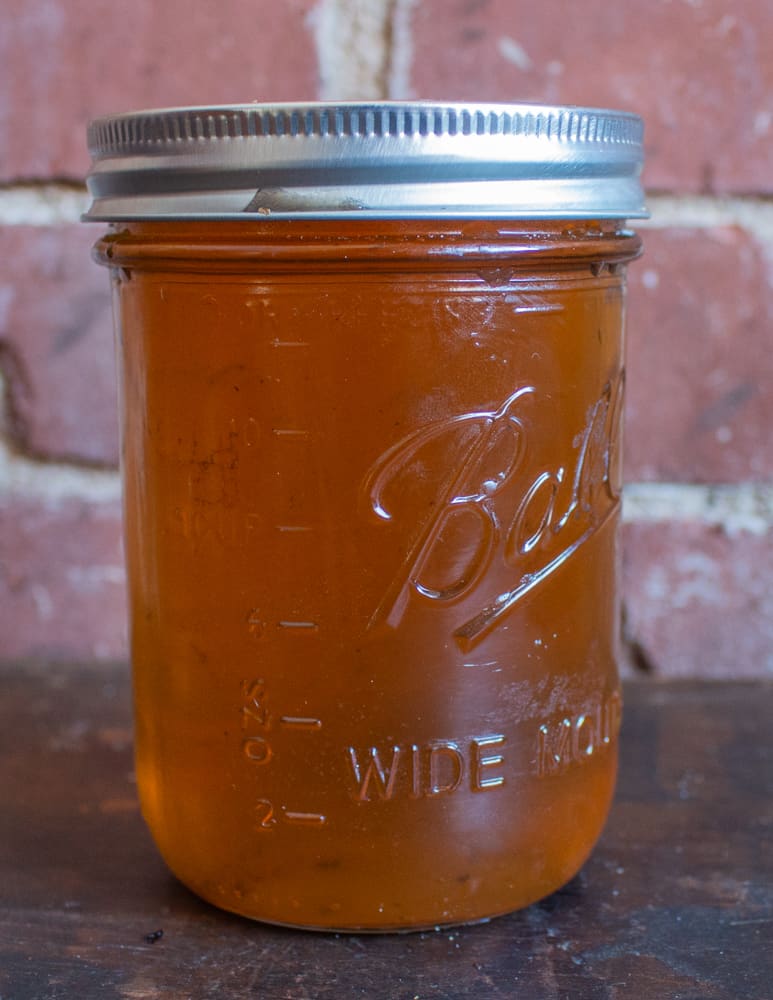
Shagbark Hickory Syrup
Equipment
- 1 Pint mason jars
Ingredients
- 8 oz shagbark hickory bark
- 6 cups water
- 4.5 cups white sugar
Instructions
Harvest the bark
- Harvest hickory bark from a living tree that looks fresh and clean, without any evidence of mold, moss, fungus, or discoloration.
- Bring the bark home and scrub it in a sink of warm water. After the bark is cleaned, put it in bowl with warm water and allow it to soak for 15 minutes. Next, drain the bark and put it a pan then into a preheated 400F oven for 25 minutes.
- Remove the bark and allow it to cool, then break it into 3-4 inch pieces.
Hickory infusion
- Put the bark into a pot with high sides, add the water to cover, bring to a simmer and cook for 30 minutes, then allow to cool with the bark still in the water. If you cook it too much and the water level gets low, add another cup of water to keep it submerged-it’s not an exact science.
Making the syrup
- Once the hickory bark tea has cooled, strain it through a fine strainer to remove any particles, put it back into a pot, preferably 8 inches in diameter that you can simmer it in, add an equal volume of sugar (one cup sugar for each cup of bark tea) bring the mixture to a boil, and cook until it reaches 219-220F on a candy thermometer. This should take about 20 minutes.
- Once the syrup hits the proper temperature, pour it, boiling hot into two clean pint mason jars, screw on the lids, and allow to cool.
Storing
- You can keep the finished syrup in a pantry for a long time, but it should be refrigerated after opening as it will eventually turn to vinegar if left out.
Serving
- Use the finished syrup anywhere you use maple syrup, but know that it’s lighter in volume. It’s not maple syrup, but it’s cheap, and fun to make.
Video
Notes
Allergy Note
I have friends that sell this at farmers markets. Inevitably people with nut allergies come around and want to try it. So far no one with a nut allergy has had a reaction to consuming hickory syrup as it's made from bark, not nuts.Nutrition
Related Posts
Forager's Guide to Shagbark Hickory Nuts

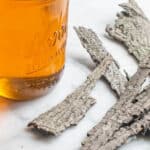
Anne
My husband was in intrigued and made a batch. The flavor is fascinating! Is the finished syrup supposed to be the thickness of maple or simple syrup, or more of a thin syrup? Thinking he may have brought it to a boil too quickly
Luckily we have some big shagbarks out back!
Alan Bergo
It's a looser syrup. Some people put corn syrup in it to prevent crystallization and make it thicker.
Matt
Alan, Hi we have some shag bark hickory’s, can it be the bark that’s peeling away from the trunk but still on the tree? Or does it have to be from the bark that’s actually stuck to the trunk still? If that makes sense?
Alan Bergo
Peeling off bark is fine.
Lauren
Thanks for this recipe! I followed your instructions exactly, but after I poured the boiling liquid into the jars, it solidified completely. Any tips on how to avoid this in the future?
Alan Bergo
Hi Lauren. If it solidified it means you cooked the syrup too long or used a wide pot. You can add 2 T of corn syrup to future batches. Corn syrup is an invert sugar and prevents crystallization, but I don't like to use it too much.
Mssb4
We absolutely LOVE this syrup! This will be my third batch and I can’t use any other kind. I’m sure this goes well with several items but my favorite so far is Acorn pancakes. Alan-Thank you for sharing.
Alan Bergo
Hey thanks Mallory.
Gerry
I made a gallon batch and just sold out of half pint jars at the farmers market yesterday. Everyone loves the smoky flavor!
Alan Bergo
Hey thanks Gerry that's great.
Becky
I have stevia growing can I use the leaves to substitute cane sugar. I know I'll have to strain out the leaves. I definitely want to try your recipe but would rather not use sugar.
Alan Bergo
Hi Becky, unfortunately I have no experience with Stevia so I can't speak to that. You could sure try and let me know how it works out.
Jo Lilley
My brother in law collected some bark for me to make this syrup. I saw in your instructions that it could turn into vinegar if left out of the refrigerator. Is it good vinegar? Could the vinegar be used in place of apple cider vinegar? I might try doing both if the vinegar is a good kind. Thank you for your information.
Alan Bergo
Hi Jo. It would make a fun vinegar, and you can infuse it with extra roasted hickory bark after it ferments. Add a splash of living apple cider vinegar to the syrup, cover with cheesecloth and leave in a cool dark place for a couple months.
Jo
I made a pint jar of this syrup. I used 2 cups of the "tea," 1 cup granulated sugar and 1 cup light brown sugar. I'm not a fan of maple syrup, but this syrup is fantastic! I'll definitely be making more for the pantry. With the slightly smokey flavor it has, I can think of a lot of recipes it would be great for: French toast made with my homemade bourbon vanilla, as a glaze on ham, etc. Thank you for sharing the recipe. I'm also going to try the vinegar. If it's anywhere as good as the syrup it will be amazing in salad dressings, marinades, etc.
Alan Bergo
Hey Jo, glad it worked for you.
Laura
If you bottle correctly for shelf stable (ie water bath can) it will not turn into vinegar. But with that said, it takes a LONG LONG LONG time for that to happen. Over a year.
Alan Bergo
Yeah. Long time.
Roger
Is it possible to substitute white with brown sugar that’s made with pure cane sugar? If so, any difference in boiling ( amount added, time or temp).
Lastly, does it matter what time a year the bark is harvested? I know with taping maple trees you only want the sap prior to bud break. Not sure if that pertains to bark too, specifically with the shagbark hickory.
Thanks!
Alan Bergo
Hey Roger, you can use any sugar here. The bark can be harvested any time, just make sure the tree is alive.
Dave
Thank you for sharing...I live on a friend's hobby farm with a 16 acre hickory bush. This is so good will be a new traditon for my family.
Alan Bergo
Let me know how you like it. I'm here if you have any questions.